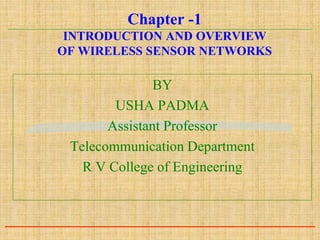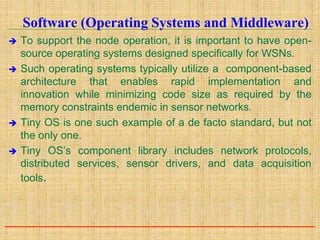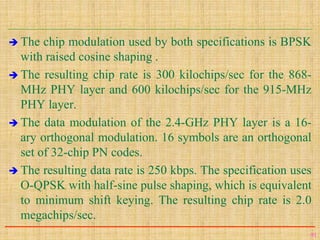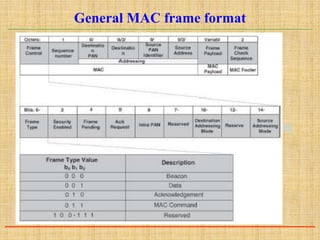This document provides an overview of wireless sensor networks, including their basic components, applications, and technical considerations. It discusses the key elements of sensor networks such as sensors, interconnecting networks, data clustering points, and computing resources. It also covers sensor types, network architectures, communication protocols, applications such as environmental monitoring and smart spaces, and challenges around power efficiency and scalability.












































































![ Some of the goals are to develop mesoscale low-
cost (i.e., <50 cents) transceivers for ubiquitous
wireless data acquisition that minimize power or
energy dissipation [i.e., minimize energy (<5
nJ/(correct) bit)] for an energy-limited source and
minimize power (i.e., <100 mW for a power-limited
source, enabling energy scavenging) by using the
following strategies: selfconfiguring networks, an
integrated system-on-a-chip (SOC) approach, and
aggressive low-energy architectures and circuits.
77](https://image.slidesharecdn.com/wsnchapter1-240118042308-be1b91d2/85/WSN_Chapter-_1-pptx-77-320.jpg)




































